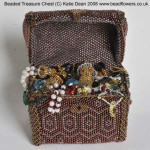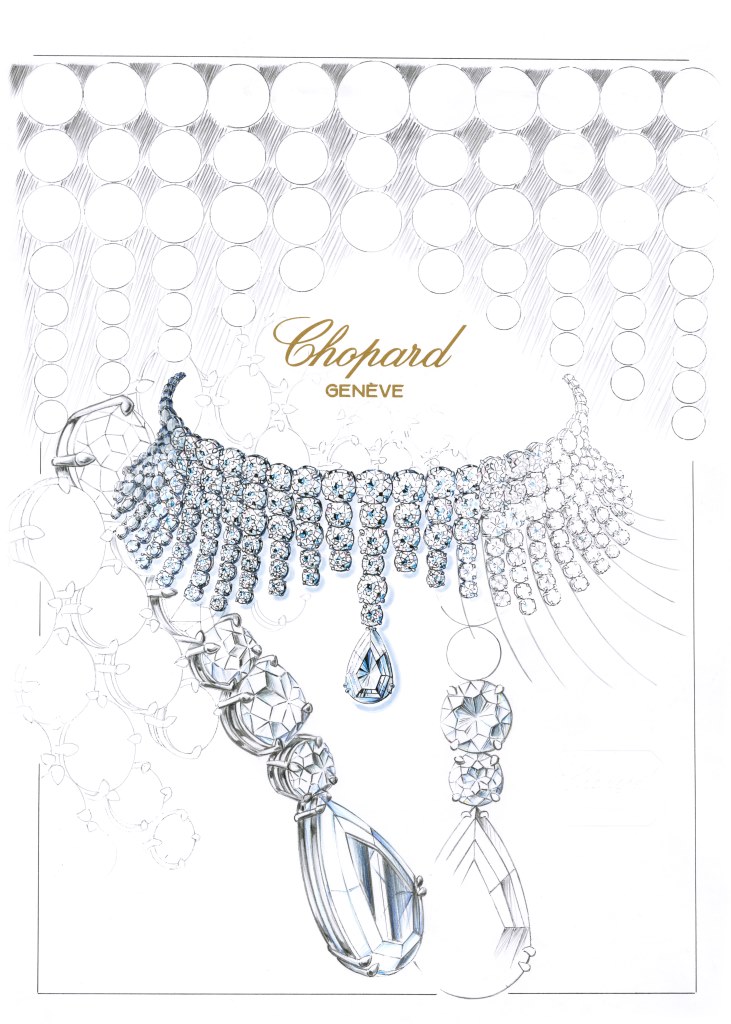Beading Competitions: Four Top Tips
 Beading competitions range in size and format from events run at your local bead shop or by your local beading group to huge international competitions that will attract top designers. I’ve been thinking a lot about beading competitions recently – why enter them and how do you do it successfully? So before I move on to the four top tips I’ve promised you, I want to talk about why you should consider entering a competition.
Beading competitions range in size and format from events run at your local bead shop or by your local beading group to huge international competitions that will attract top designers. I’ve been thinking a lot about beading competitions recently – why enter them and how do you do it successfully? So before I move on to the four top tips I’ve promised you, I want to talk about why you should consider entering a competition.
Why enter beading competitions?
The main reason is they offer a chance to challenge yourself and improve your skills. If you are looking to turn your beading or jewellery making into a career, then you might want to try some competitions to gain exposure in the beading world. Most of all, though the experience should be fun and something from which you feel you have gained, regardless of the outcome.
So, if you’re feeling brave enough to enter, what should you be thinking about to get the most out of the experience?
Beading Competitions: Tip number one
This is going to sound blindingly obvious, but my first top tip is to read the competition rules BEFORE you start doing anything! Whatever the size and scope of the  competition, there are going to be rules and very often they relate to the size or type of project that will be accepted. If you’ve made the most glorious piece of sculptural beadwork, something that took months to create, then the last thing you want is to find that the competition is only for beaded jewellery! So, check to see if there are any restrictions on size for finished items – and make sure you adhere to these carefully. Also check the rules about when a piece should have been made: most of the big international competitions will specify that entries should have been completed between certain dates, or within the past year, or similar. Even your local bead group or a competition on Facebook may have rules along these lines.
competition, there are going to be rules and very often they relate to the size or type of project that will be accepted. If you’ve made the most glorious piece of sculptural beadwork, something that took months to create, then the last thing you want is to find that the competition is only for beaded jewellery! So, check to see if there are any restrictions on size for finished items – and make sure you adhere to these carefully. Also check the rules about when a piece should have been made: most of the big international competitions will specify that entries should have been completed between certain dates, or within the past year, or similar. Even your local bead group or a competition on Facebook may have rules along these lines.
Also check the rules about showing your piece. In some beading competitions, if your work has appeared anywhere in public, then it is automatically disqualified. My advice is to just keep the piece completely secret until the results are announced – that way you don’t risk infringing any rules!
Finally, check how entries should be made: will you need to send in photos, or do you need to send the actual item? If you are being asked for photos, then make sure that these are top quality (you can find some tips here). Make sure you check how many photos will be needed and see if the rules specify a size or file type. If you need to send in the piece, then check when you should be sending it and where. Also make sure that you take out insurance and use a courier or mail service that allows you to track the item. You will not always receive confirmation of entry from the competition organisers, so the last thing you want is for your piece to go astray without you even realising.
Beading Competitions: Tip Number Two
Do your research. Alongside checking the rules, you should also be doing a bit of research. The bigger competitions will include galleries of past winners, so have  a look and see what kind pieces have won in the past. I’m not suggesting for one second that you should be trying to copy these pieces at all (I cannot emphasise how wrong this would be and how much of a copyright infringement it would be!), but you should be aware of the style and standard of the competition. If you excel in bead embroidery, but the previous winners have all been wirework, then check the rules to see if there are any restrictions on the methods you can use.
a look and see what kind pieces have won in the past. I’m not suggesting for one second that you should be trying to copy these pieces at all (I cannot emphasise how wrong this would be and how much of a copyright infringement it would be!), but you should be aware of the style and standard of the competition. If you excel in bead embroidery, but the previous winners have all been wirework, then check the rules to see if there are any restrictions on the methods you can use.
The toughest part about this tip is to be realistic: is your work really of the standard that the judges will be looking for? By being realistic, I also mean, don’t be too harsh a critic of your work. If necessary, ask a trusted friend or family member to take a look at the previous entries and say whether they think you can compete. The chances are, you probably can. You want to be stretching yourself to reach a new level. However, if you’ve only just started beading and have barely mastered the basics of one technique, then you might feel you need to learn a little more before entering one of the big international beading competitions. If that is your decision, then treat this as a goal to work towards and maybe find a competition that has a beginner’s category to test your skills and build your confidence before tackling something more ambitious.
Beading Competitions: Tip Number Three
Don’t enter to win. This may sound like completely ridiculous advice, but if you put that amount of pressure on yourself, you are going to have a tough time dealing with the mental side of beading com petitions. Beading is supposed to be fun and competitions are supposed to be fun, so your aim should be to do your best, not to win. Yes, this is a cliché, but if you pour your heart and soul into a project thinking only of the prize and the glory, you may be in for a sharp shock. The thing to remember about beading competitions, or competitions in any art form, is that they are very subjective. It is likely that the judges will have some criteria for selection: strong design, good technique and so on, but beyond that, their choice is going to reflect their personal tastes. So not winning does not mean your work is rubbish. You also have no idea what anyone else is going to create, so there can be a lot of luck involved in winning, not just skill.
petitions. Beading is supposed to be fun and competitions are supposed to be fun, so your aim should be to do your best, not to win. Yes, this is a cliché, but if you pour your heart and soul into a project thinking only of the prize and the glory, you may be in for a sharp shock. The thing to remember about beading competitions, or competitions in any art form, is that they are very subjective. It is likely that the judges will have some criteria for selection: strong design, good technique and so on, but beyond that, their choice is going to reflect their personal tastes. So not winning does not mean your work is rubbish. You also have no idea what anyone else is going to create, so there can be a lot of luck involved in winning, not just skill.
As I said at the start, one of the main reasons for entering a competition is to develop your skills and challenge yourself. If you do need to fulfil that competitive spirit, then just compete with yourself. Set yourself a challenge to master a new technique or work with a colour that you usually avoid, or work in a style that you have never tried before. Evaluate your work yourself before the competition results are announced and view yourself as a winner for achieving a new goal: winning a prize in a competition will then just be a bonus! I don’t pretend this is easy – after all, if you didn’t want to win, you wouldn’t even enter the competition, but it can be all too easy to set so much store by the results that you lose sight of all that you have achieved in just entering at all.
Beading Competitions: Tip Number Four
Stay true to yourself. Yes, a lot of competitions have categories and some may have a theme, so that may restrict the scope of your ambition, but it should not force you to make something that goe s completely against your natural style. Although I advised you to research previous winners, that should not lead you to trying to copy or evoke a style that does not feel comfortable to you. It can be hard, but have trust in yourself and your work. You are likely to produce your best work when you are feeling comfortable: not to say you shouldn’t be stretching the boundaries of your comfort zone, but don’t try and leave it all together!
s completely against your natural style. Although I advised you to research previous winners, that should not lead you to trying to copy or evoke a style that does not feel comfortable to you. It can be hard, but have trust in yourself and your work. You are likely to produce your best work when you are feeling comfortable: not to say you shouldn’t be stretching the boundaries of your comfort zone, but don’t try and leave it all together!
So now, armed with these tips, you’re ready to test your skills and try your luck. So check out the beading competitions listed on this page to see if anything tempts you!










